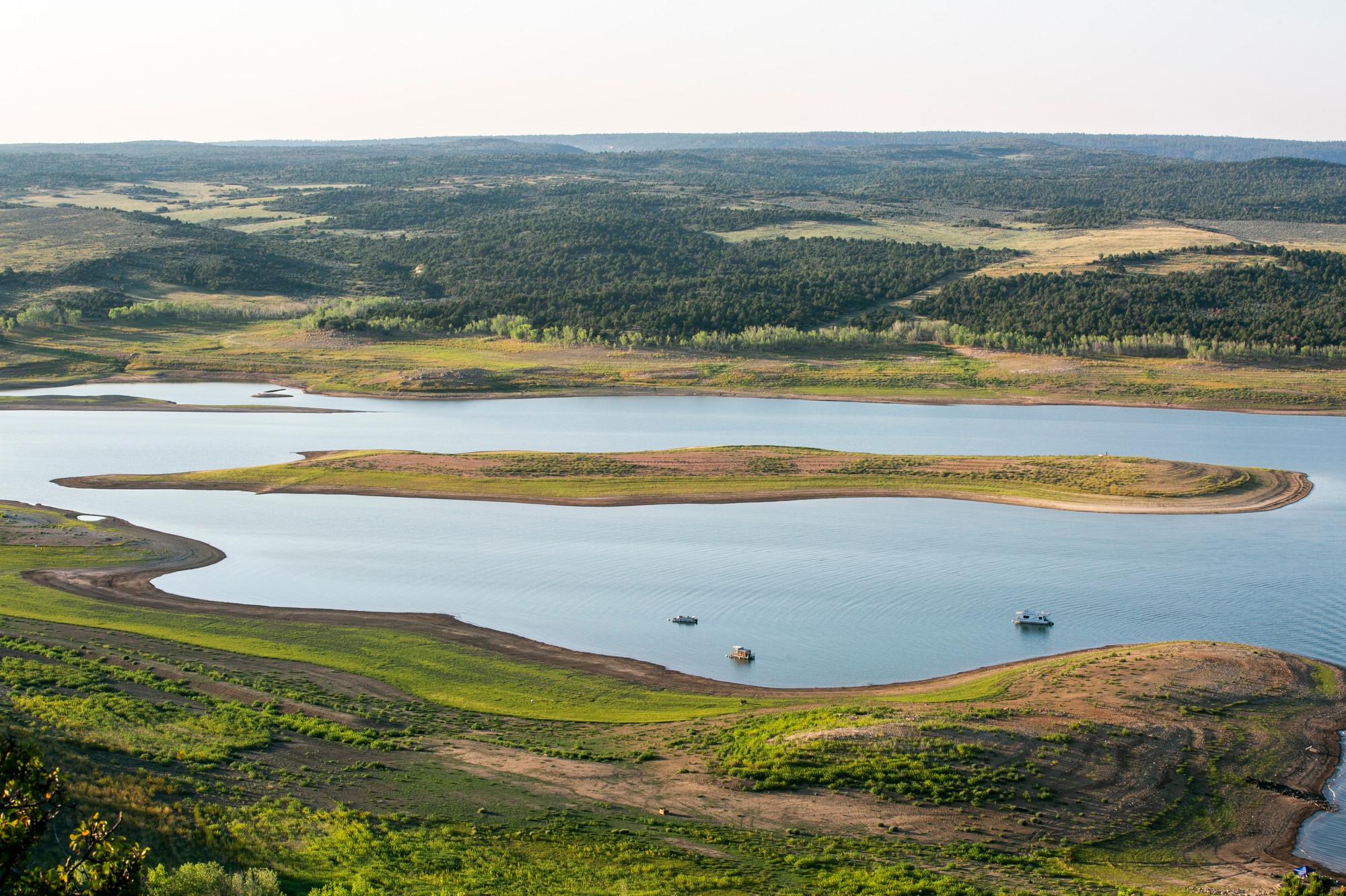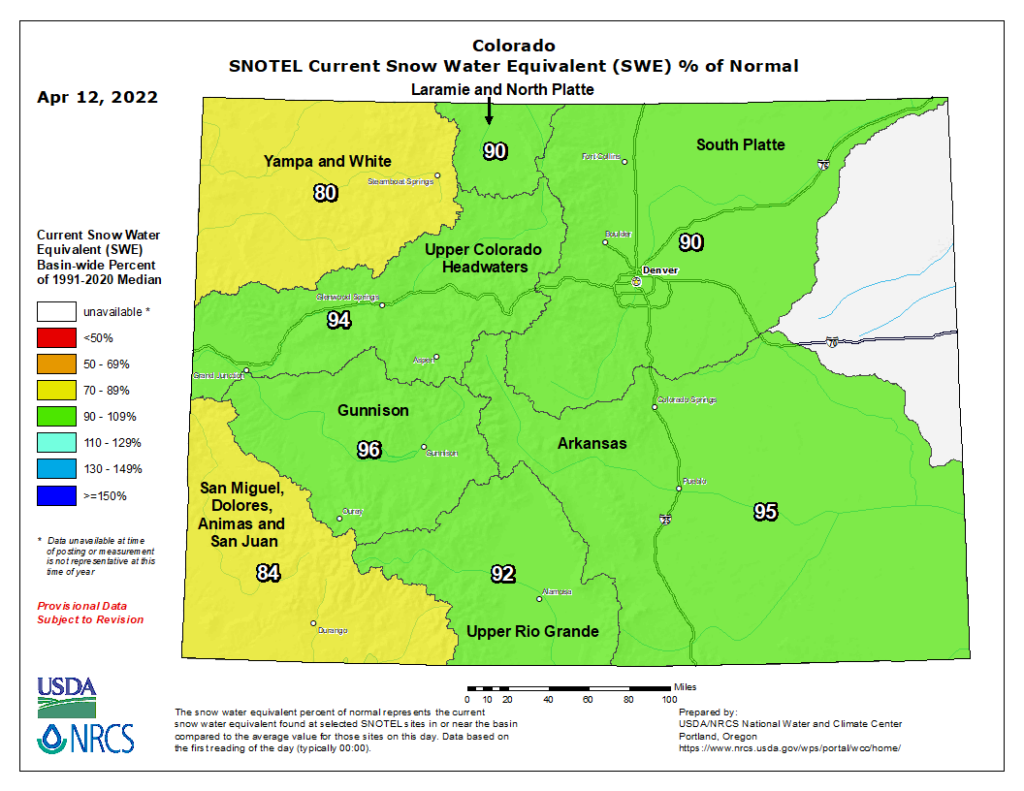
The amount of snow that’s collected in Colorado’s mountains over the winter is nearly normal for this time of year, according to the Colorado Snow Survey Program. But while statewide snowpack levels are about 91 percent of average, USDA officials say that number is starting to drop as snow in some areas starts to melt early with warmer-than-average spring temperatures.

Colorado’s runoff season is vital to replenishing the state’s rivers and reservoirs, most of which are currently sitting at below-normal levels after multiple years of climate change-driven drought. Colorado will likely face another year of below-normal water supplies despite nearly normal snowpack totals.
Farmers and ranchers use this water to irrigate their crops and hydrate their livestock, towns and cities use it for drinking water supplies, and rafters and fisherfolk rely on it for healthy streamflow. Federal and state agencies keep a close eye on the snowpack totals and how it’s melting because the outcome determines how much water Colorado has to use.
Federal data has forecasted statewide streamflow to be 86 percent of average for the 2022 season. Despite close-to-average snowfall so far, other factors like dry soil and warmer temperatures are likely to reduce the amount of snowmelt that becomes runoff and enters streams, according to a report from the USDA’s Natural Resources Conservation Service. The report also shows that all of the state’s major river basins are forecasted to have below-normal streamflow this coming summer.
If steady precipitation continues through April, the report’s authors said Colorado might have a near-normal amount of runoff compared to recent years. But the National Weather Service outlook shows Colorado leaning towards warmer-than-normal temperatures and below-normal precipitation for the month.
Back-to-back years of drought have taken a toll on water stored in Colorado reservoirs, which currently contain about 76 percent of average storage levels, data show. Only reservoirs in the South Platte river basin have reached above-average levels.
Abnormally warm temperatures in late March triggered an early start to the snowmelt season in south-central and southwest Colorado, Assistant State Climatologist Becky Bolinger said in a recent climate update. Rapid snowmelt can lead to less reliable water supplies and an increased risk of wildfire in higher elevations, she said.
Colorado’s largest reservoir, Blue Mesa, hit a record-low in 2021 after some of its water was sent downstream to help Lake Powell keep producing hydropower. The reservoir is in the Gunnison River basin, which currently has a strong snowpack and a nearly normal streamflow forecast. Despite this, Bolinger doesn’t expect Blue Mesa to make a full recovery.
“Let’s keep our fingers crossed for that,” Bolinger said.
Soil on the Western Slope isn’t likely to be as dry this spring and summer as it was in 2021, which Bolinger said is good news. That means more water will make it into streams and reservoirs because the soil isn’t as thirsty. Soils are drier in the eastern part of the state, which Bolinger said will likely cause problems for farmers during the growing season. About 83 percent of Colorado is currently in a moderate drought or worse, data from the U.S. Drought Monitor show.
More stores about water and climate in Colorado:
- Douglas County wants to buy and pump in water from San Luis Valley farmers and ranchers. But the region has its own share of water woes
- Lake Powell drops below critical threshold for the first time despite state and federal attempts to avoid it
- New UN climate report says the world has a brief window to avoid a deadlier climate future. Here’s what’s at stake in Colorado
- Bipartisan poll finds spiking concern over water supply and climate change in Colorado and Western states
- The Yampa River is ‘over-appropriated’: There isn’t enough water for everyone who wants it









